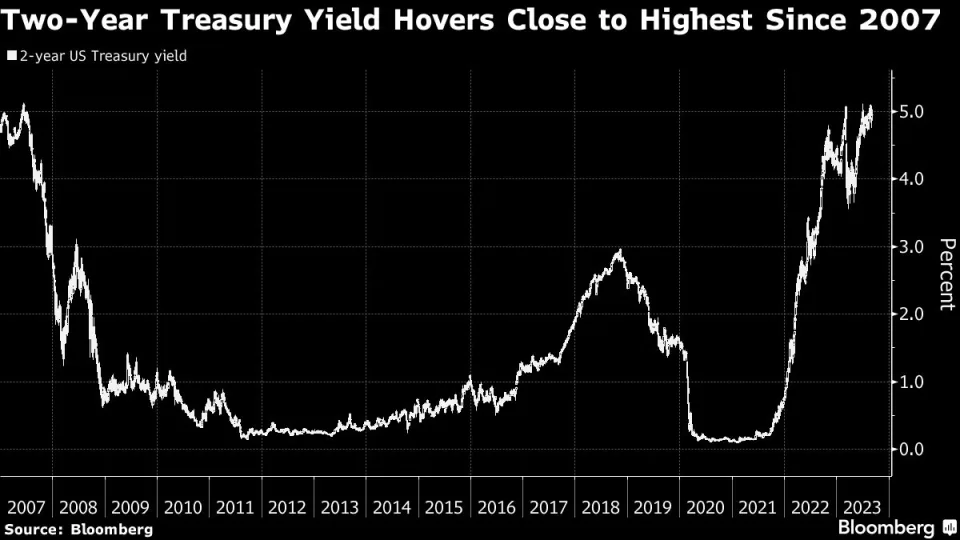Bond traders have been ratcheting up bets that the Federal Reserve isn’t done with its interest-rate hikes just yet. Next week will help determine if they’re right.
The monthly consumer-price index report on Wednesday will provide the latest insight into how much further the central bank may need to go to pull inflation back toward its target. With the economy defying gloomy forecasts and energy prices rising, economists are forecasting the biggest monthly jump in 14 months — and the swaps market is pricing in risk that it will come in even higher than expected.
The figures may deliver a fresh jolt to the Treasury market, which has been whipsawed as the surprisingly strong pace of growth leaves investors bracing for monetary policy to remain tight for longer than had been anticipated.
While signs of a cooling labor market stoked optimism that the Fed may be done, futures traders see a roughly 50% chance that it will raise rates one more time in November after holding steady at the Sept. 19-20 meeting. That’s left Treasuries on pace for a third straight annual loss as yields hover near the highest levels since before the 2008 financial crisis.
“Next week’s CPI data could provide a little bit more color” on the likely path for the Fed, said Leslie Falconio, head of taxable fixed-income strategy at UBS Global Wealth Management. “It’s not our expectation that the Fed moves in September. But while as of right now we say they don’t move in November either — you really have to give it a 50/50 chance.”
The pace of inflation has remained stubbornly above the Fed’s 2% target even though it has come down sharply from last year’s four-decade high.
The growth rate of the consumer price index is expected to have accelerated to 3.6% in August from a year earlier even as the core measure — which strips out food and energy costs — eased back to 4.3%, according to the median estimate of economists surveyed by Bloomberg. But on a month-to-month basis, the overall CPI is forecast to advance 0.6%, the biggest jump since inflation peaked in June 2022.
Fed officials have repeatedly emphasized that they remain mindful of the upside risks to inflation and may need to keep interest rates elevated even once they stop increasing them.
New York Fed President John Williams on Thursday said that monetary policy is “in a good place,” but that officials will need to parse through data to decide on how to proceed.
The Fed bumped its benchmark rate up in July to a range of 5.25% to 5.5%, the highest level in 22 years, after holding steady in June. Policymakers have not ruled out the possibility of another rate increase this year and Fed Chair Jerome Powell has underscored that their path will depend on incoming economic data.

